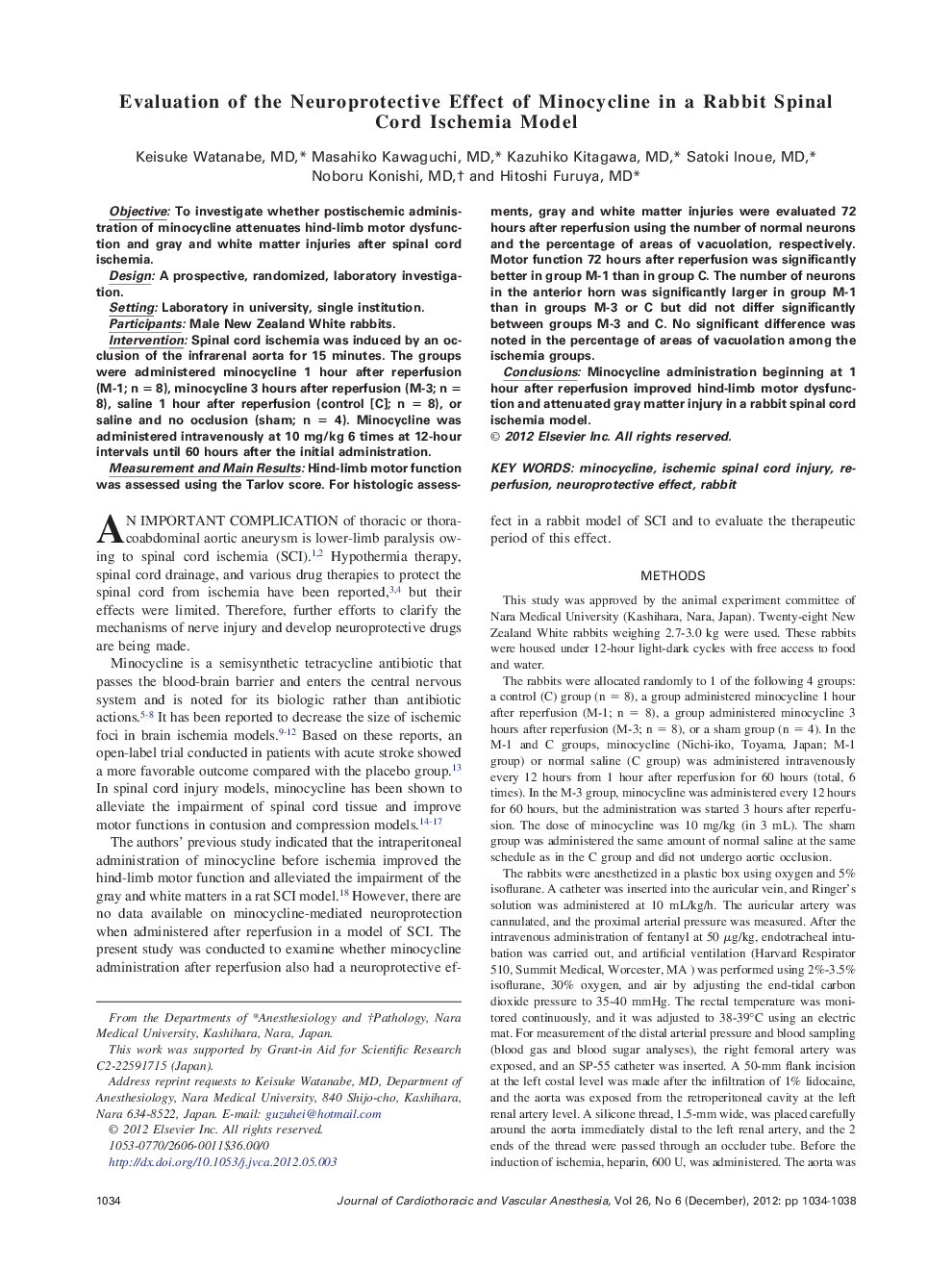| Article ID | Journal | Published Year | Pages | File Type |
|---|---|---|---|---|
| 2759716 | Journal of Cardiothoracic and Vascular Anesthesia | 2012 | 5 Pages |
ObjectiveTo investigate whether postischemic administration of minocycline attenuates hind-limb motor dysfunction and gray and white matter injuries after spinal cord ischemia.DesignA prospective, randomized, laboratory investigation.SettingLaboratory in university, single institution.ParticipantsMale New Zealand White rabbits.InterventionSpinal cord ischemia was induced by an occlusion of the infrarenal aorta for 15 minutes. The groups were administered minocycline 1 hour after reperfusion (M-1; n = 8), minocycline 3 hours after reperfusion (M-3; n = 8), saline 1 hour after reperfusion (control [C]; n = 8), or saline and no occlusion (sham; n = 4). Minocycline was administered intravenously at 10 mg/kg 6 times at 12-hour intervals until 60 hours after the initial administration.Measurement and Main ResultsHind-limb motor function was assessed using the Tarlov score. For histologic assessments, gray and white matter injuries were evaluated 72 hours after reperfusion using the number of normal neurons and the percentage of areas of vacuolation, respectively. Motor function 72 hours after reperfusion was significantly better in group M-1 than in group C. The number of neurons in the anterior horn was significantly larger in group M-1 than in groups M-3 or C but did not differ significantly between groups M-3 and C. No significant difference was noted in the percentage of areas of vacuolation among the ischemia groups.ConclusionsMinocycline administration beginning at 1 hour after reperfusion improved hind-limb motor dysfunction and attenuated gray matter injury in a rabbit spinal cord ischemia model.
